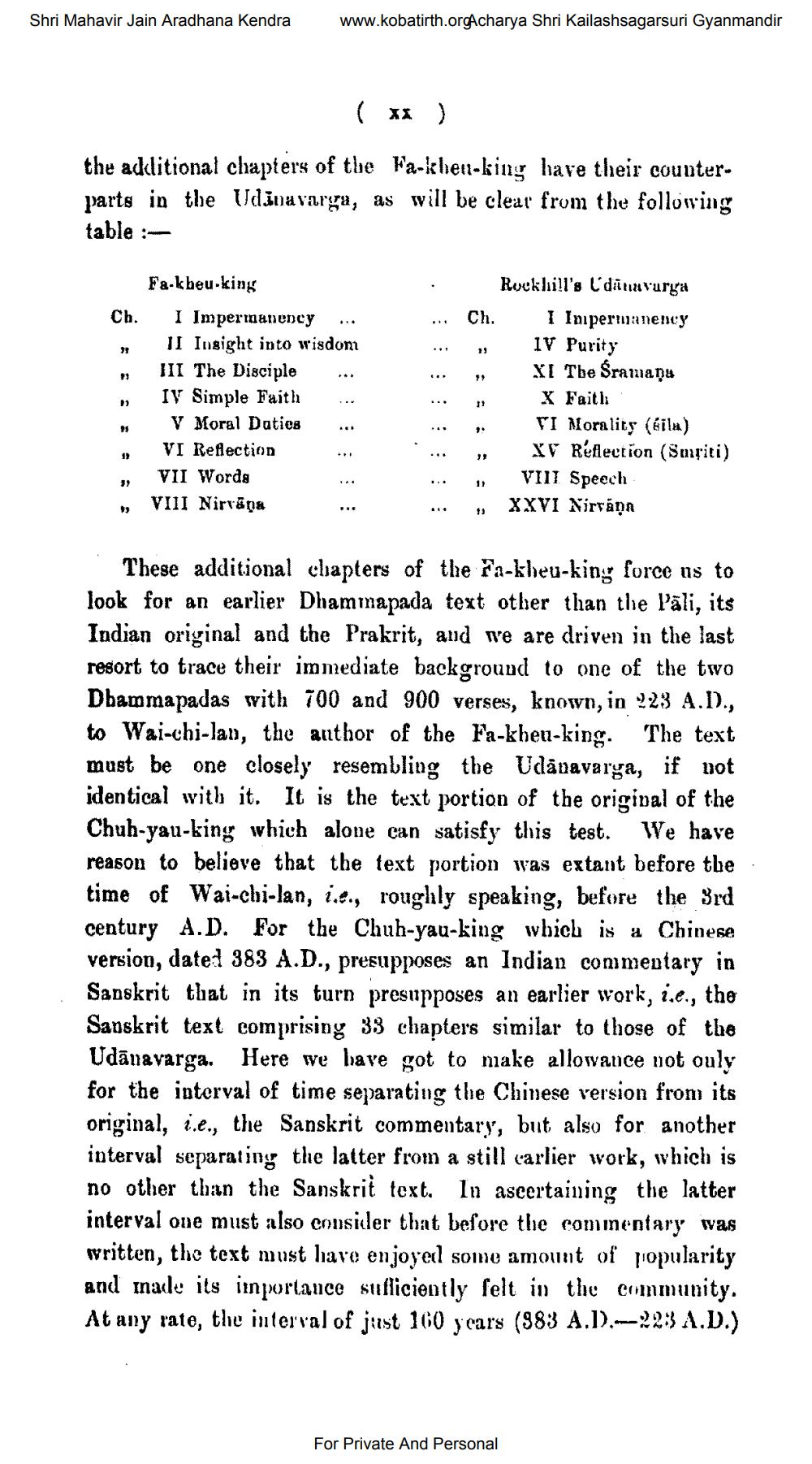________________
Shri Mahavir Jain Aradhana Kendra
www.kobatirth.orgAcharya Shri Kailashsagarsuri Gyanmandir
the adlitional chapters of the Fa-khen-kiny have their counterparts in the Udinu varga, as will be clear from the following table :
Rocklill's C dan vurga
Fa.kbeu-king Ch. I Impermanency ...
II Insight into wisdom III The Disciple IV Simple Faith
V Moral Datics VI Reflection VII Words VIII Nirvana
... Ch. I Inpermanency
IV Purity XI Tbe Sramana
X Faitli TI Morality (bila) XV Reflection (Susiti)
VIII Speech ... XXVI Nirvann
These additional chapters of the Fa-kleu-kiny force us to look for an earlier Dhammapada text other than the Pāli, its Indian original and the Prakrit, and we are driven in the last resort to trace their immediate background to one of the two Dhammapadas with 700 and 900 verses, known, in 223 A.D., to Wai-chi-lan, the author of the Fa-kbeu-king. The text must be one closely resembling the Udayavarya, if not identical with it. It is the text portion of the original of the Chuh-yau-king which alone can satisfy this test. We have reason to believe that the text portion was extant before the time of Wai-chi-lan, i.e., roughly speaking, before the 3rd century A.D. For the Chuh-yau-king which is a Chinese version, date: 383 A.D., presupposes an Indian commentary in Sanskrit that in its turn presupposes an earlier work, i.e., the Sanskrit text comprising 33 chapters similar to those of the Udāvavarga. Here we have got to make allowance not ouly for the interval of time separating the Chinese version from its original, i.e., the Sanskrit commentary, but also for another interval separating the latter from a still carlier work, which is no other than the Sanskrit text. In ascertaining the latter interval one must also consider that before the commentary was written, the text must have enjoyed some amount of popularity and inade its iinportance sufliciently felt in the community. At any rate, the interval of just 100 years (983 A.1).-223 A.D.)
For Private And Personal




